Text messaging is an increasingly important resource for reaching supporters with unmatched immediacy. Not only are 99% of text messages opened, but 90% are opened within three minutes after they’re received.
This opportunity to connect directly and immediately with supporters has made texting a key channel year-round and especially during critical fundraising campaigns like Giving Tuesday, end-of-year fundraising, and rapid-response moments. Despite its increasing utilization, reliable fundraising data around nonprofit text messaging results have been limited until now.
Last month, Tatango and MissionWired released the Nonprofit Text Messaging Insights Report as a starting point for metrics on fundraising and engagement text messaging across the nonprofit industry. The report includes data on more than 200 million nonprofit text messages sent, 162,000 donations received, and $5.4 million raised from nonprofit text messaging in 2023. Here are six takeaways from the report:
1. Text Messaging Accounted for 4.5% of Online Revenue
In recent years, texting has become one of the fastest-growing channels for nonprofit direct response. While texting hasn’t caught up to email yet—email generates 16% of online revenue—nonprofits are developing multimillion dollar texting programs that continue to achieve strong growth.
For some nonprofits with robust texting programs and especially during critical moments, text messaging is starting to outpace email as their largest driver of revenue. MissionWired, co-author of the report, has run tests to ensure this shift doesn’t mean texting is detracting from email revenue: rather, we found that organizations running multichannel campaigns raise more money for their programs overall and they’re building up a highly valuable audience of multichannel donors while they’re at it.
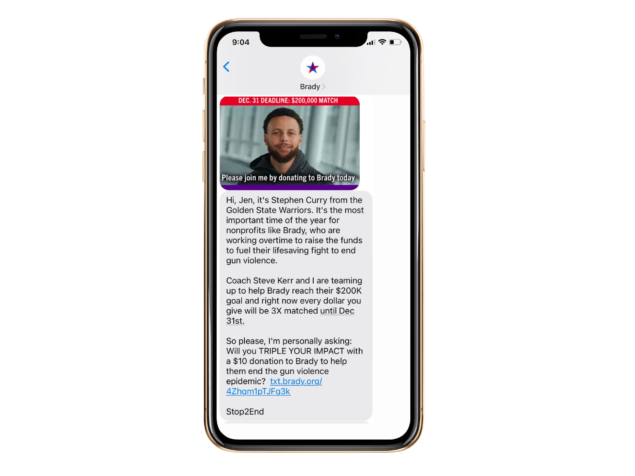
2. Nonprofits Sent 46 Text Messages Annually
Nonprofits with established texting programs are using the channel for proactive, ongoing communications similar to how we traditionally have used email. Here is the cadence of texts sent by nonprofit organizations:
- December: 5.5 texts
- November: 5 texts
- January to October: 3.5 texts each month
By establishing a regular messaging cadence, you can set an expectation among supporters that they’ll receive a few texts per month. Then you can increase that frequency during your biggest year-end campaigns, just like you would in other channels.
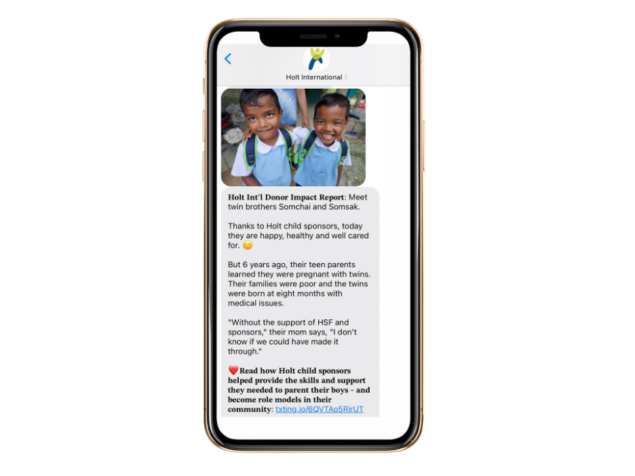
3. 52% of Texts Were Focused on Fundraising
Successful nonprofit programs are using text messaging to ask, steward, and engage donors. While 52% of texts were for fundraising, 48% were focused on sharing impact and telling stories, deepening engagement, and thanking donors, rather than relying on it only as a means for repeated fundraising appeals. For nonprofits that aren’t sending a mix of fundraising, cultivation, and engagement texts, consider the channel an important opportunity to focus on retention rates and provide additional surround-sound touchpoints for your audience throughout the year.
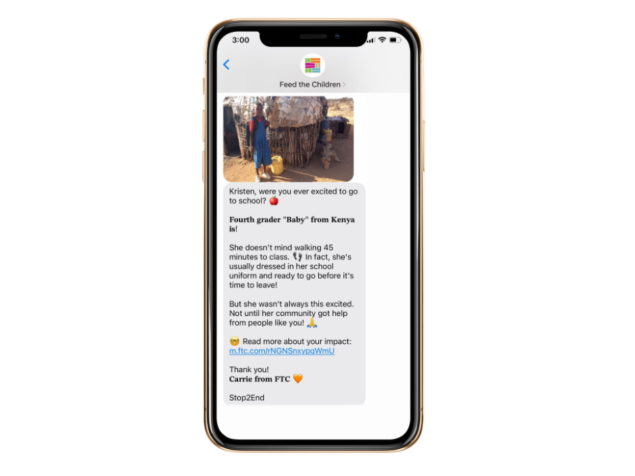
4. Fundraising Texts Sent After 6 PM Deliver 37% More Conversions
If, as we mentioned earlier, 90% of texts are opened within three minutes after they’re received, then timing really matters with texting. For the messages analyzed in this report, conversion rates increased later in the day. We broke down evening hours further, looking at send times between 6 p.m. and 9 p.m. We saw the highest conversion rate from fundraising texts sent between 8 p.m. and 9 p.m.: 0.205%, compared to 0.095% and 0.057% between the hours of 6 p.m. and 7 p.m. and between 7 p.m. and 8 p.m., respectively. We also saw opt-out rates lowest between 8 p.m. and 9 p.m., at 0.18%.
To account for this trend, it’s fair to theorize that during the week people tend to be more engaged with text messaging after work when they have free time. Whether they’re watching TV, reading a book, or scrolling through social media, it’s likely that smartphones are close by. This could easily contribute to nonprofits seeing higher conversion rates over text in the evenings.
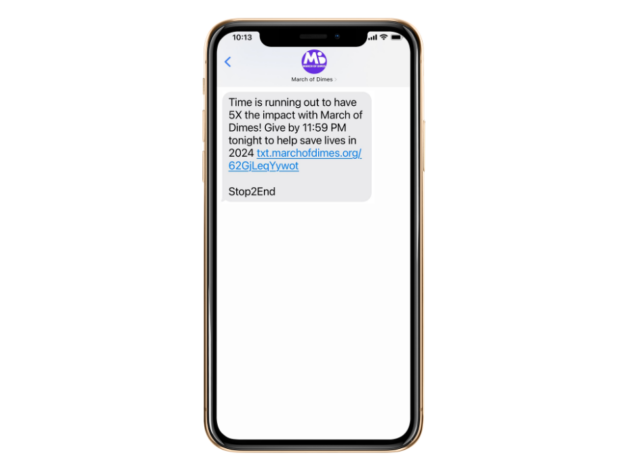
5. Shocker: 25% Higher Conversions January–October vs. End of Year
With any good results report, the fun begins when some number takes us by surprise. In this report, that surprise was that fundraising texts had a 25% higher conversion rate from January to October compared to texts sent in November and December.
What does this mean for your texting strategy? For organizations hesitating to use texting as a core channel for a regular cadence of fundraising, engagement, and cultivation messages, this data points to text as a reliable channel for driving conversion throughout the year. There is no need to wait until November and December to expand your multichannel campaigns into text.
6. Nonprofits Sent 58% MMS Texts and 42% SMS Texts
While you’ll often hear “SMS” used synonymously with “texting,” text messages
can be sent either as SMS or as MMS texts, and nonprofits will leverage each text
message type for different purposes.
- SMS refers to text-only messages, with parts that are 160 characters long, which makes them resemble a tweet
- MMS is a text message with a 5,000-character limit that can include a picture, video, or GIF, which can make them look more similar to an email
The report authors found that fundraising texts were split evenly, 50% each MMS and SMS texts. However, engagement and cultivation texts more often used MMS (67%) than SMS (33%) texts.
While MMS can incur higher costs than SMS, the return on investment can be significant. The difference in creative opportunities to engage your audience can make MMS more effective in certain moments or cultivation efforts.
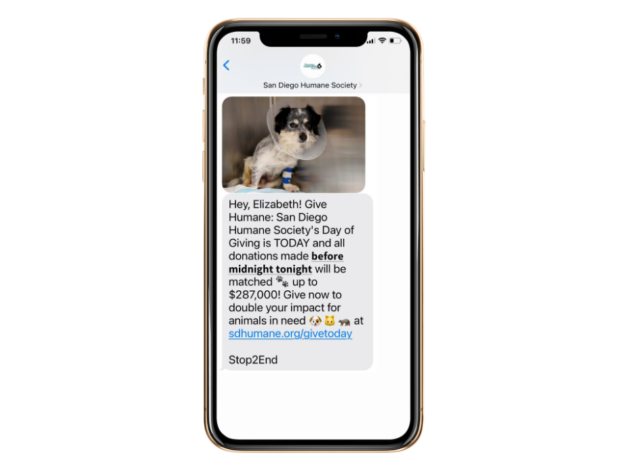
In our inaugural Text Messaging Insights Report, the teams at Tatango and MissionWired set out to establish a starting point for the nonprofit industry. Among our most meaningful takeaways is the evidence in this report that nonprofits are using texting as an ongoing communication tool to engage with supporters, connect, and fundraise.With unrivaled immediacy and engagement, text messaging has become an essential nonprofit channel for your core digital fundraising program alongside email, social, and digital ads.
To hear the report’s authors discuss the findings, watch our on-demand webinar, Introducing the Nonprofit Text Messaging Insights Report.


